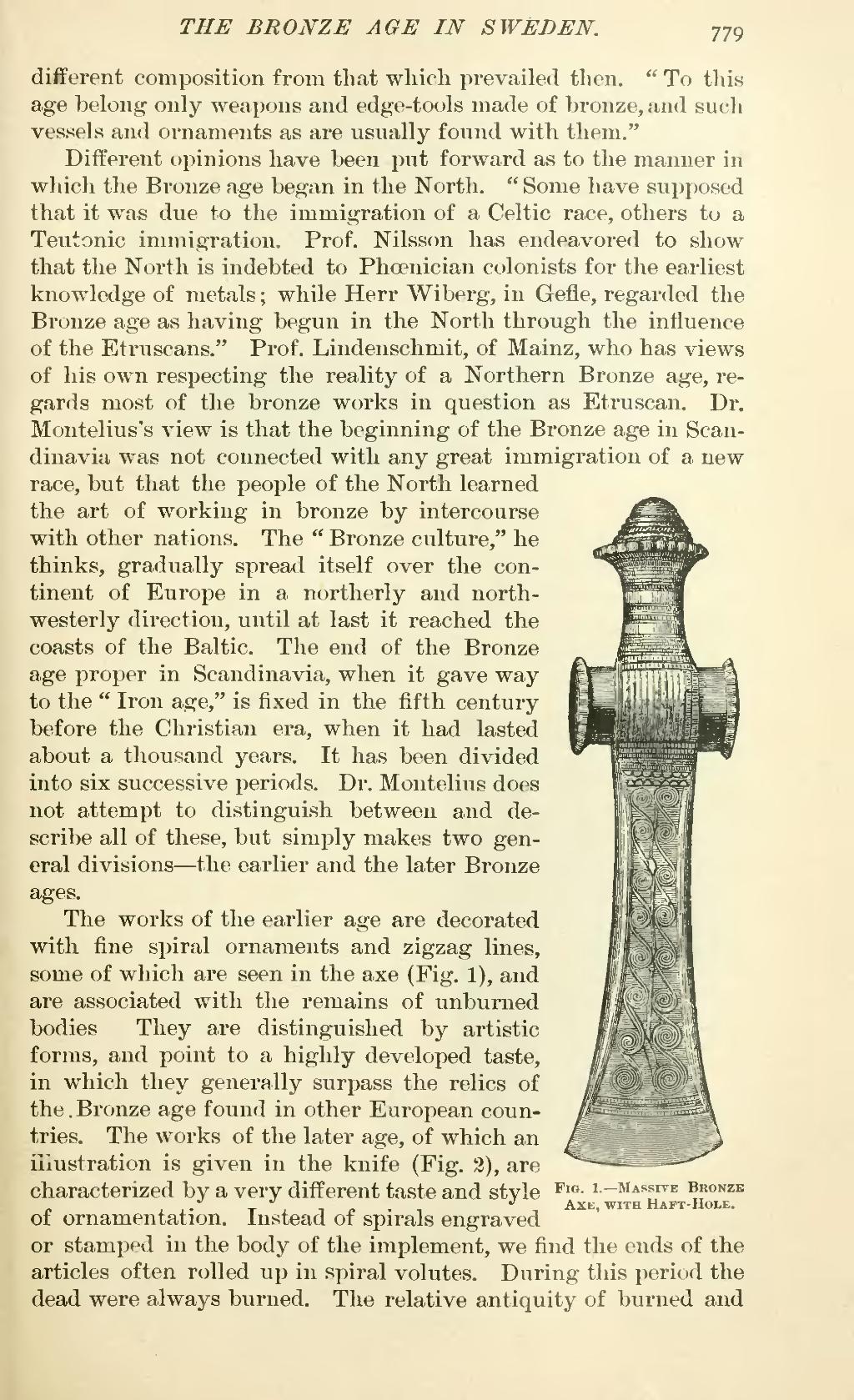different composition from that which prevailed then. "To this age belong only weapons and edge-tools made of bronze, and such vessels and ornaments as are usually found with them."
Different opinions have been put forward as to the manner in which the Bronze age began in the North. "Some have supposed that it was due to the immigration of a Celtic race, others to a Teutonic immigration. Prof. Nilsson has endeavored to show that the North is indebted to Phœnician colonists for the earliest knowledge of metals; while Herr Wiberg, in Gefle, regarded the Bronze age as having begun in the North through the influence of the Etruscans." Prof. Lindenschmit, of Mainz, who has views of his own respecting the reality of a Northern Bronze age, regards most of the bronze works in question as Etruscan. Dr. Montelius's view is that the beginning of the Bronze age in Scandinavia was not connected with any great immigration of a new  Fig. 1.—Massive Bronze-Axe, with Haft-Hole. race, but that the people of the North learned the art of working in bronze by intercourse with other nations. The "Bronze culture," he thinks, gradually spread itself over the continent of Europe in a northerly and north-westerly direction, until at last it reached the coasts of the Baltic. The end of the Bronze age proper in Scandinavia, when it gave way to the "Iron age," is fixed in the fifth century before the Christian era, when it had lasted about a thousand years. It has been divided into six successive periods. Dr. Montelius does not attempt to distinguish between and describe all of these, but simply makes two general divisions—the earlier and the later Bronze ages.
Fig. 1.—Massive Bronze-Axe, with Haft-Hole. race, but that the people of the North learned the art of working in bronze by intercourse with other nations. The "Bronze culture," he thinks, gradually spread itself over the continent of Europe in a northerly and north-westerly direction, until at last it reached the coasts of the Baltic. The end of the Bronze age proper in Scandinavia, when it gave way to the "Iron age," is fixed in the fifth century before the Christian era, when it had lasted about a thousand years. It has been divided into six successive periods. Dr. Montelius does not attempt to distinguish between and describe all of these, but simply makes two general divisions—the earlier and the later Bronze ages.
The works of the earlier age are decorated with fine spiral ornaments and zigzag lines, some of which are seen in the axe (Fig. 1), and are associated with the remains of unburned bodies They are distinguished by artistic forms, and point to a highly developed taste, in which they generally surpass the relics of the. Bronze age found in other European countries. The works of the later age, of which an illustration is given in the knife (Fig. 2), are characterized by a very different taste and style of ornamentation. Instead or spirals engraved or stamped in the body of the implement, we find the ends of the articles often rolled up in spiral volutes. During this period the dead were always burned. The relative antiquity of burned and

